MORE AT DISCOGRAPHY
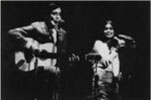

Joyce Silveira Moreno (born Joyce Silveira Palhano de Jesus) was born in Rio de Janeiro on 31 January 1948 to Zemir Silveira Palhano de Jesus and Helge Arvid Johnston, the latter a Dane who had settled in Brazil. The parents separated before her birth, and Joyce's mother, with the approval of her first husband, Luiz Antonio Palhano de Jesus, registered the infant as his daughter. A civil servant, Zemir raised her daughter and two sons from the first marriage on her own.
In 1964, while she was sixteen, Joyce participated for the first time in a studio recording at the invitation of Roberto Menescal. The disc was by the vocal group Sambacana, with songs by Pacífico Mascarenhas. From then on, always at Menescal's invitation, she began recording jingles that he produced. Around that time she began to compose, although she did it for fun, and a professional career was merely a distant dream.
Although she was self-taught on the guitar, Joyce had progressed to the point of giving guitar lessons. Finally, at the age of eighteen and shortly after she had been accepted into journalism school, she began formal music studies-first with Jodacil Damasceno (classic guitar and technique), then with Wilma Graça (theory and solfege).
In 1967, while studying journalism at PUC (Pontifícia Universidade Católica do Rio de Janeiro), Joyce became an intern at the then Mecca of aspirant journalists, Caderno B (the cultural supplement) of Jornal do Brasil. Here she came to know and work with some of the greats of the profession she would choose as alternative, in case her dream of making music were not to come true. The experience at JB was enriching and interesting, but it would be interrupted by a series of events that culminated with her first contract for a large record label.
Still in 1967, Joyce's song "Me Disseram" was a finalist in the second Festival Internacional da Canção (RJ). The song began with the line "I've been told/ that my man doesn't love me" and provoked controversy for its first-person feminine voice-never before attempted by any of the very few female songwriters in Brazil. Some journalists, like Sérgio Porto, criticized the 19-year old composer as "vulgar and immoral," while others, like Nelson Motta and Fernando Lobo, defended her "feminist posture"-something of which she had no notion at that time, wanting only to express herself in her own gender, as she had seen done by artists such as Billie Holiday and Edith Piaf.
Born and raised in Rio's Zona Sul (Posto Seis, Copacabana), Joyce studied at Colégio São Paulo, a Catholic elementary school in Ipanema. At the age of fourteen, she began playing guitar by observing her guitarist brother Newton-thirteen years older, a bank employee, and a recent law graduate, who was a friend of bossa-nova musicians like Roberto Menescal and Eumir Deodato. During that period, her home was frequented by well-known musicians, all of them her brother's friends, including Luiz Carlos Vinhas, Leny Andrade, the Castro Neves brothers, and many others. Some of them belonged to Bingo Sete, a dance combo led by Newton, with drummer João Palma, bassist Sérgio Barroso Neto, and Eumir, who in the early days of the combo played accordion. This was how the adolescent Joyce became familiar with the latest trends of bossa nova and its new harmonies.
1948
1964
1966
1967
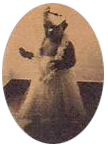
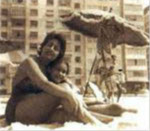
1968
1969
1970
1975 / 1976
1973
1977
1979
1980
1981
1985
1990
1993
1994
1996
1997
1998
1999
2000
2001
2004
2005
2006
2007
2008
2009
2010
2011
Short Biography
2003
1995
1987
The following year, her career began with the release of her first LP Joyce on the Philips label. It was produced by Armando Pittigliani, with arrangements by Gaya and Dori Caymmi, with an introductory text by Vinicius de Moraes on the back cover. The album included five of her own compositions, and six new songs by songwriter friends, all beginners or almost beginners like her: Paulinho da Viola, Marcos Valle, Francis Hime, Caetano Veloso, Jards Macalé, and Toninho Horta & Ronaldo Bastos.
In 1969, the singer recorded her second LP, Encontro Marcado, which represented Nelson Motta's debut as producer. Luiz Eça wrote the arrangements. That year Joyce made her first trip abroad as professional musician, performing with Edu Lobo at Teatro Villaret in Lisbon, Portugal.
She graduated from PUC-Rio in 1970 and joined the musical group Sagrada Família. Led by Luiz Eça, the group had a two-month engagement at the Hotel Camino Real in Mexico City. Following the tour, Joyce married the composer Nelson Angelo, also a member of the group.
Between 1970 and 1971 she, Nelson Angelo, Novelli, Toninho Horta, and Naná Vasconcelos made up the vocal and instrumental group A Tribo, recording several tracks on the disc Posições, released by Odeon. The same label also released a solo EP by Joyce.
Recently separated in 1975, Joyce resumed her career, substituting for the guitarist Toquinho at Vinicius de Moraes' side on a Latin American tour. As a result of the tour's success, she was invited to participate in the poet's shows in Europe, this time with Toquinho. This tour engendered the 1976 recording of the LP Passarinho Urbano in Italy. The album was produced by Sérgio Bardotti for the label Fonit-Cetra and included the work of songwriters censored by the Brazilian military dictatorship: Chico Buarque, Milton Nascimento, Caetano Veloso, Edu Lobo, Maurício Tapajós, Vinicius de Moraes, and others. It was discreetly released in Brazil the following year.
In 1973, Joyce and Nelson recorded the LP Nelson Angelo e Joyce, her only professional recording between 1971 and 1975, a time in which she dedicated herself exclusively to her daughters Clara and Ana, born in 1971 and 1972, respectively.
In 1977, Joyce had a six-month engagement in New York, where she recorded the LP Natureza with Maurício Maestro. Produced and arranged by Claus Ogerman and featuring jazz musicians Michael Brecker, Buster Williams, and Joe Farrell, the album was never released. Its repertoire included several songs by Joyce that would later become emblematic in her career, such as "Feminina" and "Mistérios." Only two tracks from this album ever saw the light of day, and that many years later: "Feminina" was included in the 1999 compilation A Trip to Brazil II and "Descompassadamente" in Claus Ogerman's 4-CD box set Claus Ogerman-The Man Behind the Music (2002).
The singer's stay in New York would have an important consequence in her personal life; there she met the Bahian drummer Tutty Moreno, whom she would marry. The couple's daughter Mariana would be born in Rio in 1979.
Beginning in 1979, Joyce's compositions would be interpreted by other singers, including Milton Nascimento, Elis Regina, Maria Bethânia, Boca Livre, Nana Caymmi, Quarteto em Cy, Joanna, Fafá de Belém, Ney Matogrosso, and others. The success of her songs recorded by better-known voices prompted EMI-Odeon to offer her a contract.
In 1980, she participated in TV Globo's Festival MPB 80, reaching the finals with the song "Clareana," a lullaby written in Rome in 1976. This song, created for her daughters, would suggest the still-unborn Mariana in the verse "... Clara, Ana e quem mais chegar..." (Clara, Ana, and whoever else arrives). Also in 1980, Joyce released the album Feminina, whose outstanding tracks were the title song and "Clareana," a commercial hit that gave Joyce her first major media exposure.
During the 1980s, the singer released seven discs, Água e Luz (1981) contained the hit "Monsieur Binot." Tardes Cariocas (1983) was an independent production that would receive the Chiquinha Gonzaga prize the following year. Saudade do Futuro (1985) with special guest, Milton Nascimento, opened with Lennon & McCartney's "When I'm 64" and concluded with "Ziriguidum 2001" (Aurênio/Tiãozinho da Mocidade/Gibi) . . Wilson Batista: o Samba Foi Sua Glória (1986) was recorded with the sambista Roberto Silva for Acervo Funarte. Tom Jobim:Anos 60 (1987, with Gilson Peranzzetta) was a tribute to the composer who had just turned 60 and who wrote the text for back cover. Negro Demais no Coração (1988), an homage to Vinicius de Moraes with guest appearances by Caetano Veloso, Maria Bethânia, and Moraes Moreira, was nominated for the Prêmio Sharp de Música in the Best Female Singer and Best MPB Disc categories. Joyce ao Vivo (1989) reprised some of Joyce's best-known songs and featured guest artists Chico Buarque and Boca Livre.
In 1985, Joyce began her collaboration with the musical show director Túlio Feliciano. Quadrantes, her first show directed by Túlio, marked a new stance in her stage work: a voice-and-guitar performance, with scenery created by the graffiti artist Alex Vallauri and painted by Joyce herself during the show. The next year, the collaboration with Túlio was renewed in the show Saudade do Futuroat Teatro Ipanema and would continue for the rest of the decade.
Having signed up with the Verve label, Joyce released the disc Music Inside in 1990 and Language and Love the following year. The legendary Jon Hendricks was her guest in Language and Love, Whose Brazilian edition was titled Línguas e Amores. Both discs were recorded in New York.
In 1993, the singer appeared before an audience of 2,000 at The Fridge in London. It was the first time that a Brazilian artist had played on the acid-jazz circuit. As a result of this show, Joyce's music was discovered by English DJs, with international repercussion that brought the acoustic swing of her tunes to the hippest dance clubs around the world. Among the songs 'discovered' by this young public were "Feminina," "Baracumbara," and above all "Aldeia de Ogum," which would become a big hit on the electronic music scene.
A year later, EMI-Odeon released the CD Revendo Amigos, a songbook of Joyce's most famous songs interpreted by other singers. Among the guest artists were Gilberto Gil, Gal Costa, Ney Matogrosso, Emílio Santiago, Wanda Sá, Sandra de Sá, Beth Carvalho, Boca Livre, Clara Moreno, Gilson Peranzzetta, Fátima Guedes, and Chico Buarque. The producer was her old friend Roberto Menescal.
In 1995, Joyce participated in the first tribute to Tom Jobim at Carnegie Hall. In '96, also in New York, she performed at the Songwriters' Hall of Fame Awards presentation along with Liza Minnelli, Tony Bennett, and James Brown.
In 1997, Joyce published the book Fotografei Você na Minha Rolleyflex, a collection of personal chronicles and memoirs revolving around popular Brazilian music. The book was praised by the critics and paved the way for the author to become a weekly columnist in the newspaper O Dia between 1998 and 2000.
Joyce returned to New York in 1998 to record the CD Astronauta, a tribute to Elis Regina. Participating in the disc were both Brazilian musicians (Tutty Moreno, Rodolfo Stroeter, Guello, Dori Caymmi, Romero Lubambo) and jazz artists (Joe Lovano, Mulgrew Miller, Renee Rosnes). The album was nominated for the 2000 Grammy Latino in the Best Brazilian Music CD category.
Another album of her own compositions was recorded in 1999. Hard Bossa was the artist's first venture with the English label Far Out, which would go on to launch future successful projects.
In 1999 and 2000, Joyce created and presented the highly acclaimed television series Cantos do Rio, a showcase for Rio de Janeiro and its musicians. Produced by MultiRio, a multimedia arm of the municipality of Rio de Janeiro, and first broadcast on the educational channel TVE, the program was revived in 2002 on the commercial TV Bandeirantes RJ. In both phases, guest musicians discussed their work and played their music with Joyce. Among them were Hermeto Pascoal, Época de Ouro, Paulo Jobim & Lisa Ono, Elton Medeiros, Done Ivone Lara, Milton Nascimento & Naná Vasconcelos, Edu Lobo, Carlos Lyra, João Donato, Roberto Menescal, Billy Blanco, Zélia Duncan, Marcos Valle & Ed Motta, Paulinho Moska & Mauricio Carrilho, Leila Pinheiro & Zezé Gonzaga, Herminio Bello de Carvalho, Doris Monteiro & Tito Madi, Clara Sandroni & Marcos Sacramento. In addition to the sessions with individual musicians and groups (usually shot in the musicians' homes or at music venues), Joyce presented general programs shot on location. These included Jongo da Serrinha, forró in São Cristóvão, Teatro Rival, Mangueira, and Lapa-in short, wherever Brazilian music sprouts under the Carioca sun.
Some of Joyce's songs were featured in Hollywood film soundtracks. The original recording of "Tema Para Jobim" (Joyce/Gerry Mulligan), sung by Joyce and Milton Nascimento, was used in Robert Altman's The Player. Joyce's base recording for her tune "Aldeia de Ogum" was sampled by the hip-hop group Blackeyed Peas, remixed with a refrain by Sting, renamed "Magic," and used in the film Legally Blonde.
In 2000 Joyce conducted Brazilian music workshops at the Rytmisk Konservatorium of Copenhagen, Denmark, and in Soweto, South Africa, where she also participated in the Arts Alive Festival of Johannesburg. The same year, she recorded the album Tudo Bonitowith special guest João Donato, who's since become one of her regular collaborators.
Christened Joyce Silveira Palhano de Jesus, the artist changed her name legally to Joyce Silveira Moreno on 5 May 2001 when she was married to Tutty Moreno in a civil ceremony following 24 years of domestic partnership. Also this year, she launched the CD Gafieira Moderna, another Far Out release containing her own compositions. Biscoito Fino would release the disc in Brazil the following year. This album was graced with the guest appearance of Elza Soares and carried a bonus track with a short video.
In 2002 and 2004, Joyce was invited to tour with the WDR Big Band of Cologne, Germany in the concert series "A Trip to Brazil" and "Brazil Today," also featuring Tutty Moreno and Marcio Bahia with Gilson Peranzzetta conducting his own arrangements.
A second nomination to the Grammy Latino came in 2004, this time for the samba "A Banda Maluca," which competed in the Best Brazilian Song (Portuguese Language) category. The same year, she received the Brazilian International Press Lifetime Achievement Award, given in the United States to Brazilians who contribute to Brazil's positive image abroad.
In 2005, the artist released her first DVD, Joyce & Banda Maluca-Ao Vivo, a co-production of TV Cultura (São Paulo) and Biscoito Fino. Recorded live at Teatro Franco Zampari in São Paulo, the DVD shines the spotlight on the musicians who have accompanied Joyce for many years: Tutty Moreno, Rodolfo Stroeter, Teco Cardoso, and Nailor Proveta of the regular band, as well as the guest performance by Robertinho Silva. The show was aired on TV Cultura on New Year's Day, along with scenes from the band's 2004 tours in Japan and Europe. Also, Joyce's CD Banda Maluca was nominated to the Grammy Latino 2005 as Best Brazilian Album.
In 2006, as part of her annual European tour, she played before an audience of close to 8,000 spectators at the 26th Jazz à Vienne festival in France. The show, which was recorded for a French TV special, took place in the ancient city’s Roman amphitheatre. In the same year, Joyce played in Japan with her guest, guitarist Roberto Menescal. Together, they took part in the Tokyo Jazz Festival, performing to an audience of 5,000 at Marunouchi Hall.
In 2007, upon completing 30 years as a couple, Joyce and Tutty Moreno decided to record their first joint album. The resulting CD, Samba-Jazz & Outras Bossas, was their tribute to the music that typified the adolescence of their generation in the 1960s. The disc is equally divided between instrumental tunes (with Joyce’s voice blending with a group of wind instruments) and songs with lyrics. In this CD, Tutty Moreno also returns to his original instrument, playing alto sax on one of the tracks.
In December 2007, Joyce appeared once again with the WDR Big Band in Cologne, Germany, this time with three arrangers: principal arranger Gilson Peranzzetta, and guest arrangers/instrumentalists Jaques Morelenbaum and Nailor Proveta, in “Celebrating Jobim,” a project commemorating the 80th birthday that Tom Jobim would have celebrated had he been alive.
In 2008, many dates were observed: Joyce began the year celebrating her 60th birthday with a show at Mistura Fina, in Ipanema, Rio de Janeiro. In March of the same year, she took part in the events marking 50 years of bossa-nova, performing in the big show on Ipanema Beach. In May, she curated a big event on 50 years of bossa-nova at Barbican Hall in London, where she presented to her loyal English audience her first-generation bossanovista guests—Roberto Menescal, Wanda Sá, Carlos Lyra, Marcos Valle, João Donato, Dori Caymmi—and the neo-bossanovistas Celso Fonseca, Clara Moreno, and Vinicius Cantuária. In July, her bossa-nova tribute show at the Blue Note in Tokyo generated a Fuji TV special.
Speaking of Japan, another date was commemorated in 2008: 200 years of Japanese immigration to Brazil. To celebrate the date, the Japanese consulate invited Joyce to appear in concert at Rio de Janeiro’s Teatro Municipal, accompanied by the Orquestra Petrobrás Sinfônica, and with Crown Prince Naruhito and his retinue on the audience. The Prince, who is a bossa-nova fan, made a point of thanking Joyce in person for the concert at a pleasant meeting the following day.
In August of the same year, Joyce taught professional musicians at the Summer Session Clinic in Vrå, Denmark. Among the other teachers were jazz drummer Jeff “Tain” Watts, keyboardist Sam Yahel, legendary saxophonist Yusef Lateef, Czech bassist Miroslav Vitous (founding member of Weather Report) and Norwegian trumpeter Per Jørgensen.
Also in 2008, Joyce celebrated 40 years as a professional musician with the DVD/CD Joyce Ao Vivo—40 anos de carreira, recorded live at Teatro Fecap in São Paulo and released by EMI Brasil. Both show and DVD were replete with guests who had played an important part in Joyce’s professional trajectory: Dori Caymmi, João Donato, Leila Pinheiro, Roberto Menescal, Zé Renato, Francis Hime, Monica Salmaso, and Joyce’s daughters, the singers Clara Moreno and Ana Martins. The DVD was directed by Roberto de Oliveira, and the show’s general director was Joyce’s old partner Túlio Feliciano.
2009 was a prolific year, in which no fewer than four different CDs were released by various record companies in different countries. The first was Visions of Dawn (Far Out Recordings), comprising a never-released 1976 recording session that Joyce had made in Paris with Mauricio Maestro and Naná Vasconcelos. Then came Celebrating Jobim, the 2007 concert with the WDR Big Band, released in Japan by Omagatoki
2010 began with an invitation from Rio’s City Hall to make a solo show in the open air, at sunset, on the beach at Ipanema. The joy of that moment, joined with the warm reception of the audience to the specially selected repertoire of carioca songs, propelled Joyce toward the CD Rio, which she would record the following year.
In 2010, Joyce returned to the Festival Tensamba in the Canary Islands, this time in a belated commemoration of 50 years of bossa-nova, alongside Roberto Menescal, Danilo Caymmi, Clara Moreno, and João Donato.
A U.S. and Canada tour followed, with Joyce and her band appearing in university campuses (e.g., Yale), festivals, theaters, and jazz clubs, as they had done the previous year.
The CD Slow Music, released in 2009, was nominated for the 2010 Latin Grammy as the best Brazilian music album. This was Joyce’s fourth Latin Grammy nomination.
In 2010, Joyce realized another long-cherished dream, a TV project in which the history of Brazil is told through popular song. This became No Compasso da História, a Multirio TV series created and presented by Joyce, who also served as musical director. In the series are 15 one-hour documentaries, directed by Leila Hipólito and scripted by Fátima Valença, which took a year and a half to complete. Interpreting the musical repertoire of approximately 150 songs that describe great moments of Brazilian history is a cast of guest performers who appear with Joyce, including Marcos Sacramento, Paulinho Moska, Marlui Miranda, Clara Sandroni, Cris Delanno, Soraya Ravenle, Alfredo del Penho, Pedro Miranda, Paula Santoro, Pedro Paulo Malta, Ana Martins, and Antonia Adnet (who also served as Joyce’s assistant musical director).
In 2011 Joyce recorded Rio, her first solo album, with just voice and guitar, and songs inspired by Rio de Janeiro, written by composers such as Tom Jobim and Noel Rosa. She also included two previously unrecorded compositions of her own: “Meu Rio,” the first song written by her, at the age of 14, and “Puro Ouro,” a brand-new samba, dedicated to Rio’s new generation of crack musicians.
As she does every year, Joyce again toured Europe and Japan with her band.
In December 2011, Joyce took part in the concert (at Sala Ibirapuera, São Paulo) and companion CD Mario Adnet—Vinicius e os Maestros, a symphonic interpretation of songs by Vinicius de Moraes and his musician partners Claudio Santoro, Pixinguinha, Moacir Santos, and Baden Powell.
“…One of the best singers of all times!… As if it weren’t enough, Joyce is a great composer and plays ace guitar! What an amazing woman!”
Antonio Carlos Jobim, 1987.
“Joyce is a Brazilian treasure”
DownBeat magazine, 2010.
"Her musical capacity surprised me when, years later, she reemerged playing guitar like the best (in the land of João Gilberto, Dori [Caymmi], [Gilberto] Gil, and João Bosco, this is not a bagatelle), her singing precisely tuned, writing songs with original harmonic and melodic imagination."
Caetano Veloso - 2011
Born in Rio de Janeiro, the singer, composer, arranger and instrumentalist JOYCE MORENO has in her portfolio 400 recordings of songs she has authored, interpreted by the greatest names in Brazilian popular music: Elis Regina, Gal Costa, Maria Bethânia, Milton Nascimento, Ney Matogrosso, Edu Lobo, Emilio Santiago, Boca Livre, Nana Caymmi, Zizi Possi, Elizeth Cardoso, Simone, Leny Andrade, Mônica Salmaso, and many others. Beyond Brazil, Joyce’s work has been recorded by Annie Lennox, Wallace Roney, Omara Portuondo, Black Eyed Peas, David Sanchez, Jon Lucien, Claus Ogerman, Gerry Mulligan, Till Brönner, and Flora Purim, to name a few. Joyce’s compositions have been featured in film soundtracks (e.g., The Player by Robert Altman and Legally Blonde by Robert Luketic), animations (the Japanese anime Wolf’s Rain, in partnership with composer Yoko Kanno), TV programs, and theatrical productions. Since the beginning of her career, Joyce’s registered trademark has been the first-person feminine voice, which she pioneered; she was the first Brazilian songwriter to express herself in this form, opening the way for countless other artists who followed.
Joyce received four nominations for the Latin Grammy. To date, she has released 33 personal CDs and two DVDs, in addition to numerous compilations and guest appearances. Currently, her work takes her all over the world; she makes annual tours and records new albums in various countries, never losing her feminine Brazilian identity. Each year she performs on the Japanese Blue Note circuit and tours jazz festivals and other venues in Europe and North America.
MULTIMIDIA
In 1997, Joyce broadened her creative output with the publication of her first book, Fotografei Você na Minha Rolleyflex (editora MultiMais), a behind-the-scenes memoir of her early career. From 1998 to 2000, she wrote a weekly column in the Rio daily O Dia.
Between 1999 and 2002, Joyce created an original TV project, the series Cantos do Rio, which presented a panorama of MPB and its creators in Rio de Janeiro. In 2010/2011, Joyce conceived and presented another series for MultiRio: No Compasso da História, Brazil’s history told through popular song in 15 documentaries.
Besides these, two completely new CDs were recorded and released in 2009. Aquarius, incorporating new compositions authored by Joyce and João Donato, was released by the Japanese label Toy’s Factory. Slow Music, an album inspired by the Slow Life movement, was a project that Joyce had long dreamed of realizing. The disc, which is dedicated entirely to love songs, was recorded in just three days Biscoito Fino in Rio and nominated for the Latin Grammy the following year.
Also in 2009, Joyce performed for the first time in Canada, appearing with her quartet in all the major jazz festivals: Vancouver, Ottawa, Toronto, and Montreal. The success of those appearances got the invited back the next year.
The same year, Joyce adopted her civil name as her artistic name: JOYCE MORENO.
Also in 2005, Joyce and Dori Caymmi recorded the CD Rio-Bahia for JVC Japan in a co-production with Far Out. The disc contains new songs by both artists, as well as some re-recordings. Jazz pianist Kenny Werner, a sideman in Joyce's Verve recordings of the early '90s, makes a guest appearance here. Dori, who was Joyce's first arranger in 1968, returns with string arrangements in addition to singing on most of the tracks. The disc also includes the debut
of songs by new partnerships: Dori/ Chico Buarque and Joyce/ Carlos Lyra.
In 2005, Joyce participated in the second Festival Tensamba in Tenerife, Canary Islands.
In 2003, Joyce was invited by the film composer Yoko Kanno to participate in the sound track of the anime Wolf's Rain, shown on Japanese TV.
Also in 2003, Far Out released her CD Just a Little Bit Crazy at the Barbican Center in London. Retitled Banda Maluca in its Brazilian edition (Biscoito Fino, 2004), the CD featured the Norwegian pianist Bugge Wesseltoft, an early exponent of jazz/house fusion and later of nu-jazz. Like Hard Bossa and Gafieira Moderna, Banda Malucacontained only Joyce compositions, unlike Bossa Duets, which was commissioned by Sony Japan and recorded a week apart. In the latter, bossa-nova classics are interpreted by Joyce in duets with Johnny Alf, João Donato, Wanda Sá, Toninho Horta, and Ana Martins. These artists were also among her guests at the annual tours she makes around the Blue Note chain of jazz clubs in Japan.
Still in the '90s, Joyce recorded the discs Delírios de Orfeu (1994) with special guests Mario Adnet and Jaques Morelenbaum; Live at the Mojo Club (1995), recorded in Hamburg before a thousand people; Sem Você (1995) with Toninho Horta-a second tribute to Jobim, who had recently died; and Ilha Brasil (1996), with previously unreleased compositions by Joyce.
Between 1985 and 1987, Joyce was invited to join CNDA (Conselho Nacional de Direito Autoral) along with songwriters Gonzaguinha, Fernando Brant, and Mauricio Tapajós, all zealous guardians of copyright since the days of Sombrás, a movement created in the 1970s to champion the enactment of copyright legislation, non-existent in Brazil at the time.
During the same period, Joyce's international career gained new force. First came performances in 1985 at the Youth Festival in Moscow and the Yamaha Festival in Japan. Soon thereafter, performances in France and Belgium, with shows at the Theatre de La Ville in Paris and various jazz festivals. That was the beginning of a productive career of touring in Europe and Japan that continues until now.
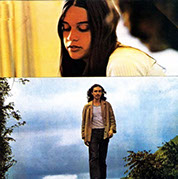
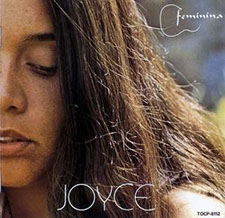
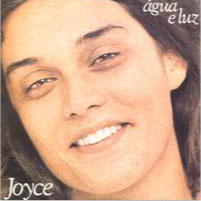
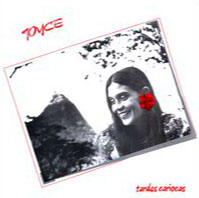
MORE AT DISCOGRAPHY
MORE AT DISCOGRAPHY
MORE AT DISCOGRAPHY
MORE AT DISCOGRAPHY
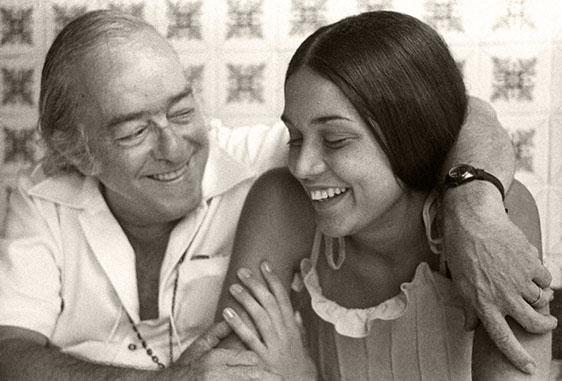
"I could talk here of Joyce the brunette, a neat kid from Copacabana, with green eyes, a somewhat sad smile, and the mouth of a sullen girl. A modern and considerate girl with the little face of a new moon in an afternoon sky, all curved. An up-front person, as they like to say now, and practically falling over with bossa. [...]"
CLICK TO READ THE FULL QUOTE
Quote from Vinícius de Moraes, 1968, Rio de Janeiro
Quote from Tom Jobim, 1987

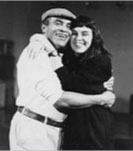
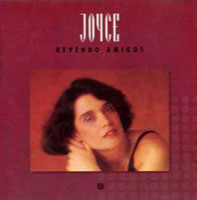
MORE AT DISCOGRAPHY
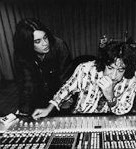
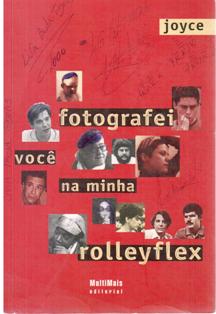
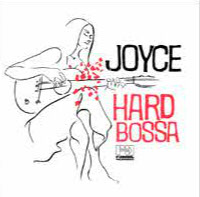
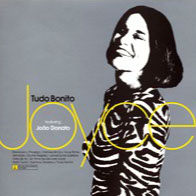
MORE AT DISCOGRAPHY
MORE AT DISCOGRAPHY
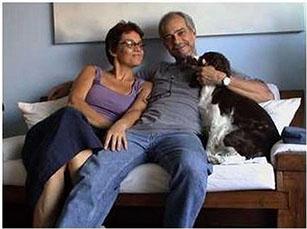

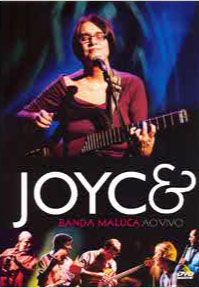
MORE AT DISCOGRAPHY
MORE AT DISCOGRAPHY
MORE AT DISCOGRAPHY
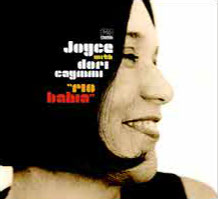
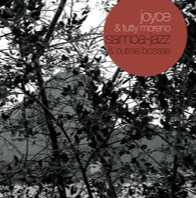
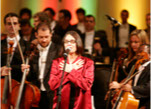
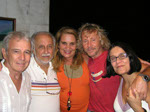
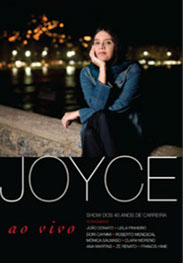
VEJA MAIS EM DISCOGRAFIA
MORE AT DISCOGRAPHY
MORE AT DISCOGRAPHY
MORE AT DISCOGRAPHY
MORE AT DISCOGRAPHY
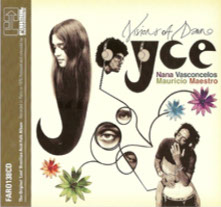
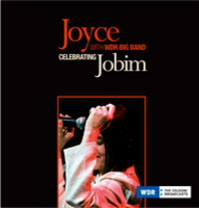
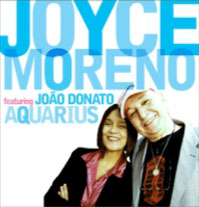
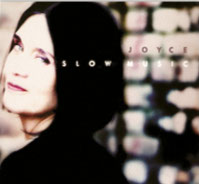
MORE AT DISCOGRAPHY
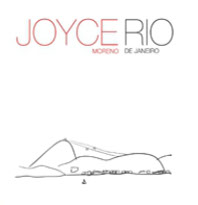
BRAZIL BOOKING
INTERNATIONAL BOOKING
Carolina Gouveia